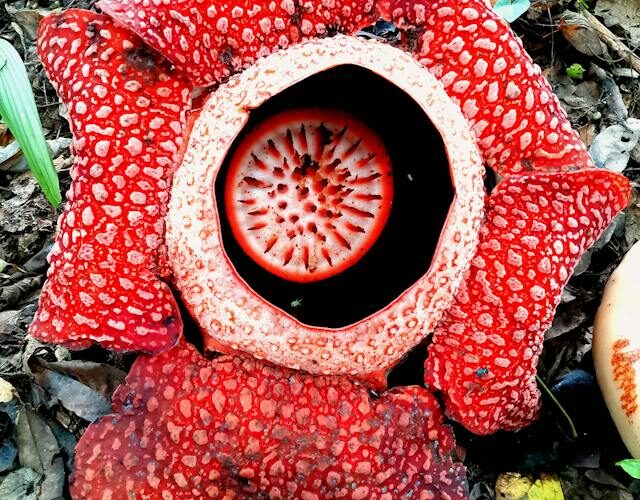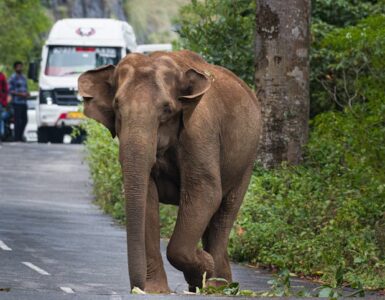We normally associate fragrance, aroma, and sweet smells when we speak about flowers.
What if I tell you about a flower that emits a scent of rotting flesh? It’s hard to believe, but it is true.
Rafflesia Arnoldii is a species of flowering plant that emits a horrible, awful, and highly unpleasant odor, often resembling the scent of rotting flesh.
Given this characteristic, in Indonesian, it is often referred to as “Bunga Bangkai”; bunga means flower, while Bangkai can be translated as a corpse, emphasizing the foul odor emitted by the flower.
Interestingly, though nature has been unkind in terms of giving its smell, it is known for producing the largest individual flower on Earth. The Rafflesia Arnoldii flower can reach up to three feet (about 1 meter) in diameter, making it the largest individual flower in the world.
Even the flower’s exterior is impressive, as it is known for its large, fleshy, reddish-brown to maroon-colored flowers. The color can vary slightly, and the shade may depend on age and environmental conditions.
The flower lacks traditional petals, as found in typical flowers. Instead, it has large, fleshy, lobed structures often referred to as “petals,” but they are not the same as the delicate, colorful petals found in many other flowers. The flower’s interior is spotted or speckled, while the outer petals usually have a smoother texture.
The coloration of the enormous flower and its distinctive features make it a unique and easily recognizable plant. The foul odor emitted by the flower, resembling the scent of rotting flesh, further contributes to its distinctiveness and attracts the flies and insects that pollinate it.
Rafflesia Arnoldii flower belongs to the genus Rafflesia, which consists of several species found in Southeast Asia, particularly in Indonesia, Malaysia, Thailand, and the Philippines. It is a parasitic plant that lacks leaves, stems, and roots. It derives nutrients from a host plant, typically a species of Tetrastigma vine.
In Indonesia, Bukit Barisan Selatan National Park in Sumatra and Gunung Gede Pangrango National Park in Java are some locations where Rafflesia Arnoldii can be found. In the Indonesian language, apart from Bunga Bangkai (Corpse Flower), it is also called “Padma Raksasa” meaning giant flower.
In Malaysia, regions in Malaysian Borneo, such as Sabah and Sarawak, are known for hosting Rafflesia Arnoldii. It is also found in southern regions of Thailand and some parts of Mindanao in the Philippines.
The intriguing bit is the flowering process of Rafflesia Arnoldii is unpredictable, and the flower remains open for only a few days before wilting. The blooming period is often difficult to predict, and people interested in observing these flowers may need to be patient and fortunate to witness the rare event.
Due to its unique characteristics and rarity, Rafflesia Arnoldii has become a subject of interest for botanists, researchers, and nature enthusiasts.
Unfortunately, Rafflesia Arnoldii is considered rare and endangered as habitat loss, deforestation, and illegal collection threaten its survival. Conservation efforts are underway to protect its natural habitat and ensure the survival of this remarkable species.






Add comment